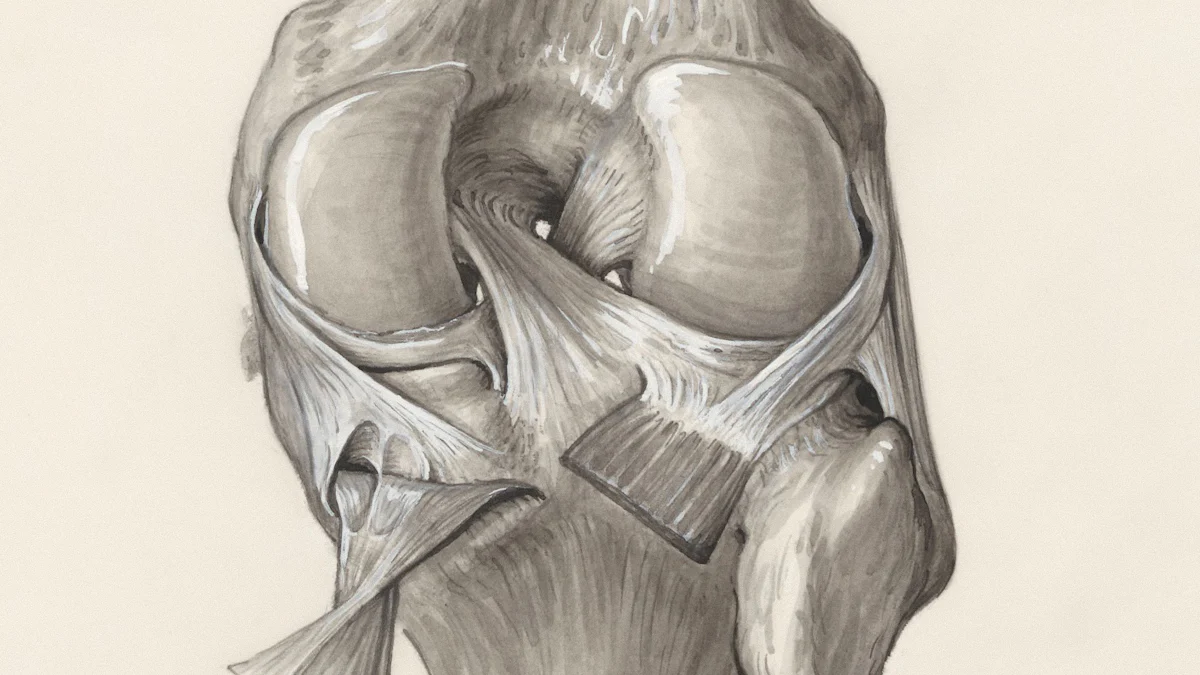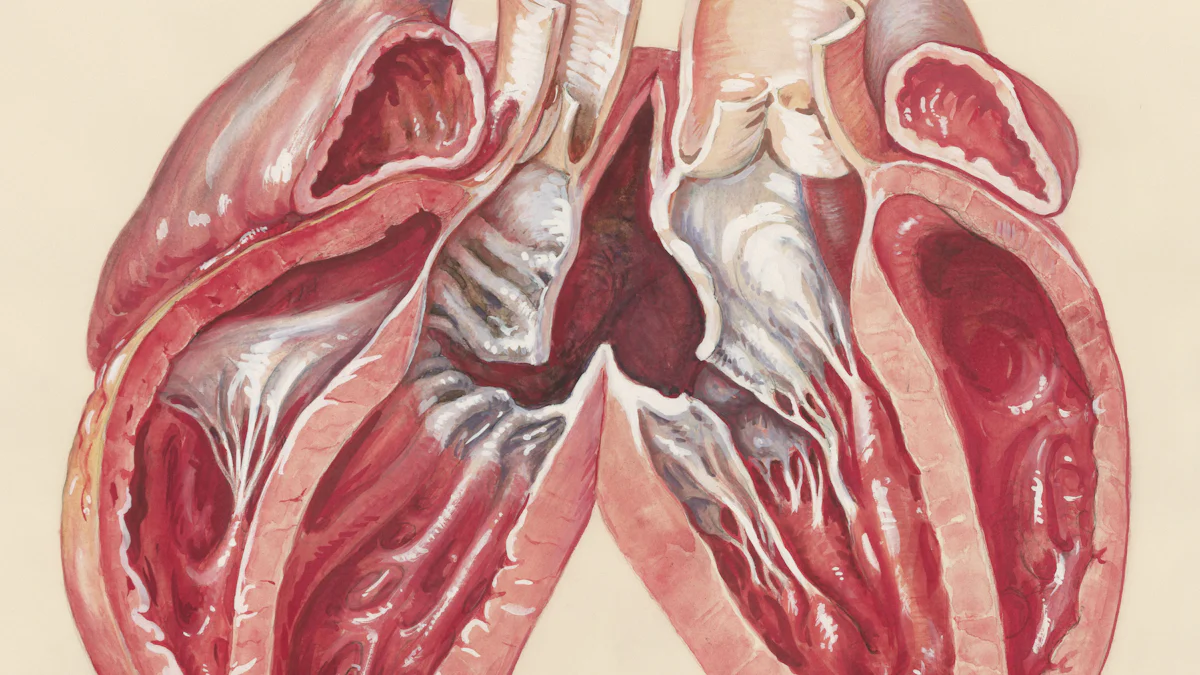Anatomica: The Exquisite and Unsettling Art of Human Anatomy

Anatomica captures the intricate beauty and complexity of the human body through the lens of anatomical art. This unique art form reveals a dual nature, blending aesthetic allure with an unsettling exploration of anatomy. Anatomica highlights this intersection, showcasing how artists have historically collaborated with scientists to create detailed visualizations. During the Renaissance, artists gained insights into body proportions and dynamics, enhancing their compositions. Art has proven valuable in education, with 70% of students finding it helpful for understanding anatomy. Anatomica continues to bridge art and science, offering a profound appreciation of the human form.
Historical Perspectives on Anatomical Art
Early Depictions of Human Anatomy

Ancient Civilizations and Their Contributions
Ancient civilizations laid the foundation for understanding the human body. Greek and Roman physicians, such as Galen, studied anatomy extensively. These early efforts distinguished medicine from philosophy. Greek sculptures reflected detailed anatomical art, showcasing the human form with precision. The work of these early anatomists influenced later generations.
Renaissance and the Birth of Modern Anatomy
The Renaissance marked a transformative period for human anatomy. Artists rediscovered the intricacies of the body, leading to realistic representations. Italian Renaissance artists pioneered anatomical illustration, refining lifelike portrayals. Leonardo da Vinci emerged as a significant anatomical illustrator. His dissections and detailed drawings surpassed university knowledge of anatomy. Collaboration between artists and anatomists produced images that combined medical knowledge with artistic vision.
Evolution of Techniques and Styles
Influence of Scientific Discoveries
Scientific discoveries played a crucial role in the evolution of anatomical art. Anatomists like William Hunter and Joseph Maclise contributed to this field. William Hunter's book, "Surgical Anatomy," provided valuable insights. Gautier d’Agoty and Nicolas-Henri Jacob created images that depicted the human body with accuracy. These works served as educational tools, enhancing understanding of human anatomy.
Transition from Realism to Abstract Interpretations
The transition from realism to abstract interpretations marked a new era in anatomical art. Artists began exploring the human body through different lenses. Charles Landseer and Howard Goodall experimented with styles that challenged traditional norms. This shift allowed for diverse expressions of the human form. The unsettling art of human anatomy found its place in modern art movements. Laurence King Publishing played a role in documenting these changes through art books.
Techniques and Mediums in Anatomical Art

Traditional Methods
Drawing and Sketching
Artists have long used drawing and sketching to explore human anatomy. These techniques allow for detailed and precise representations of the body. Ancient artists often used charcoal and ink for their sketches. These materials provided depth and contrast. Renaissance artists elevated these methods. Leonardo da Vinci's anatomical drawings exemplify this mastery. His work combined scientific accuracy with artistic skill. The study of anatomy enhanced the understanding of proportions and movement dynamics. This knowledge led to more dynamic compositions.
Sculpture and Modeling
Sculpture and modeling offer a three-dimensional perspective on anatomy. Artists use materials like clay, marble, and bronze. These mediums allow for lifelike representations of the human form. Greek and Roman sculptures showcased detailed anatomical features. These works served as educational tools and artistic expressions. Renaissance sculptors continued this tradition. Michelangelo's sculptures reveal an intricate understanding of the human body. These pieces reflect both beauty and anatomical precision. Sculpture remains a vital medium for exploring anatomy.
Modern Approaches
Digital Art and 3D Modeling
Digital art and 3D modeling revolutionized anatomical art. These technologies provide new ways to visualize the human body. Artists use software to create detailed digital illustrations. These images offer accuracy and flexibility. 3D modeling allows for interactive exploration of anatomy. Medical professionals use these models for education and research. Digital art bridges the gap between traditional techniques and modern technology. This approach enhances the understanding of complex anatomical structures.
Mixed Media and Experimental Techniques
Mixed media and experimental techniques push the boundaries of anatomical art. Artists combine various materials and styles. This approach creates unique and thought-provoking pieces. Some artists use photography, painting, and sculpture together. These works challenge traditional perceptions of the human body. Experimental techniques explore abstract interpretations of anatomy. These pieces often comment on social and cultural issues. Mixed media art offers a fresh perspective on the human form. This approach continues to evolve and inspire.
The Impact of Anatomical Art
Influence on the Art World
Inspiring Contemporary Artists
Anatomical art continues to inspire contemporary artists. The intricate details of the human body captivate the imagination. Artists explore the intersection of science and creativity. The Wellcome Collection showcases works that blend anatomy with modern art. These pieces highlight the enduring fascination with human anatomy. Artists like Hunter and Jacob draw inspiration from historical illustrations. Their work reflects a deep understanding of the body's complexity. The Wellcome Collection's exhibitions provide a platform for these innovative expressions.
Exhibitions and Public Perception
Exhibitions play a crucial role in shaping public perception. The Wellcome Collection curates displays that challenge traditional views of the human body. Visitors engage with images that reveal both beauty and complexity. The book called Human Anatomy offers insights into these artistic endeavors. Public interest in anatomical art grows through these curated experiences. The Wellcome Collection's exhibitions foster appreciation and curiosity. The interplay between art and anatomy becomes a focal point for discussion.
Contributions to Medical Science
Educational Tools and Resources
Anatomical art serves as a valuable educational tool. Medical students benefit from visual representations of the human body. The Wellcome Collection provides resources that enhance learning. Art paintings improve understanding of surface anatomy. Students find lectures more engaging with artistic elements. The relationship between visual arts and anatomy enriches education. The Wellcome Collection's resources support this interdisciplinary approach.
Enhancing Understanding of Human Anatomy
Anatomical art enhances understanding of human anatomy. Detailed images offer insights into the body's structure. The Wellcome Collection's collection includes works by renowned artists. These images bridge the gap between art and science. The book emphasizes the importance of accurate visualizations. The Wellcome Collection's efforts contribute to medical education. The collaboration between artists and anatomists continues to evolve. This partnership fosters a deeper appreciation of the human body.
Anatomica and the Fisher Rare Book Library
Significance of Anatomica in the Library's Collection
Historical Value and Preservation
The Thomas Fisher Rare Book Library houses a remarkable collection of anatomical art. The Anatomica collection features approximately 4500 full-page plates. These illustrations come from the Jason A. Hannah and Academy of Medicine collections. Each piece reflects the evolution of anatomical understanding over centuries. Preservation efforts ensure that these works remain accessible for future generations. The library maintains these pieces with care, highlighting their historical significance.
Accessibility for Research and Education
Researchers and students benefit from the accessibility of this collection. The library provides valuable resources for those studying human anatomy. Scholars explore the intricate details of the human body through these illustrations. Educational programs utilize these resources to enhance learning experiences. The library's commitment to accessibility supports academic growth and discovery.
The Role of the Fisher Rare Book Library
Supporting Academic and Artistic Endeavors
The Fisher Rare Book Library plays a crucial role in supporting both academic and artistic pursuits. The library offers a space where art and science intersect. Students and artists draw inspiration from the detailed anatomical illustrations. The library encourages exploration and creativity through its diverse collection. Collaborative projects often emerge from this unique environment.
Promoting Public Engagement with Anatomical Art
Public engagement remains a priority for the library. Exhibitions and events invite the community to explore anatomical art. Visitors gain insights into the beauty and complexity of the human body. The library fosters appreciation for the work of artists like Joanna Ebenstein. Ebenstein writes about the intersection of art and anatomy, offering a fresh perspective. The library's efforts promote a deeper understanding of the human form.
Anatomical art embodies a unique blend of beauty and discomfort. This dual nature captivates both artists and scientists. The relationship between anatomy and art remains interdependent. Artists rely on anatomical knowledge for realistic portrayals. Anatomists need artists to create accurate illustrations. This collaboration enriches both fields. The enduring significance of anatomical art continues to inspire exploration. A deeper appreciation of the human form emerges through this intersection. The pursuit of understanding transforms art into a scientific exploration. This journey invites further curiosity and admiration.
See Also
Visual Encyclopedia of American History
Illustrated History of Ancient Rome
Illustrated History of Ancient Greece

